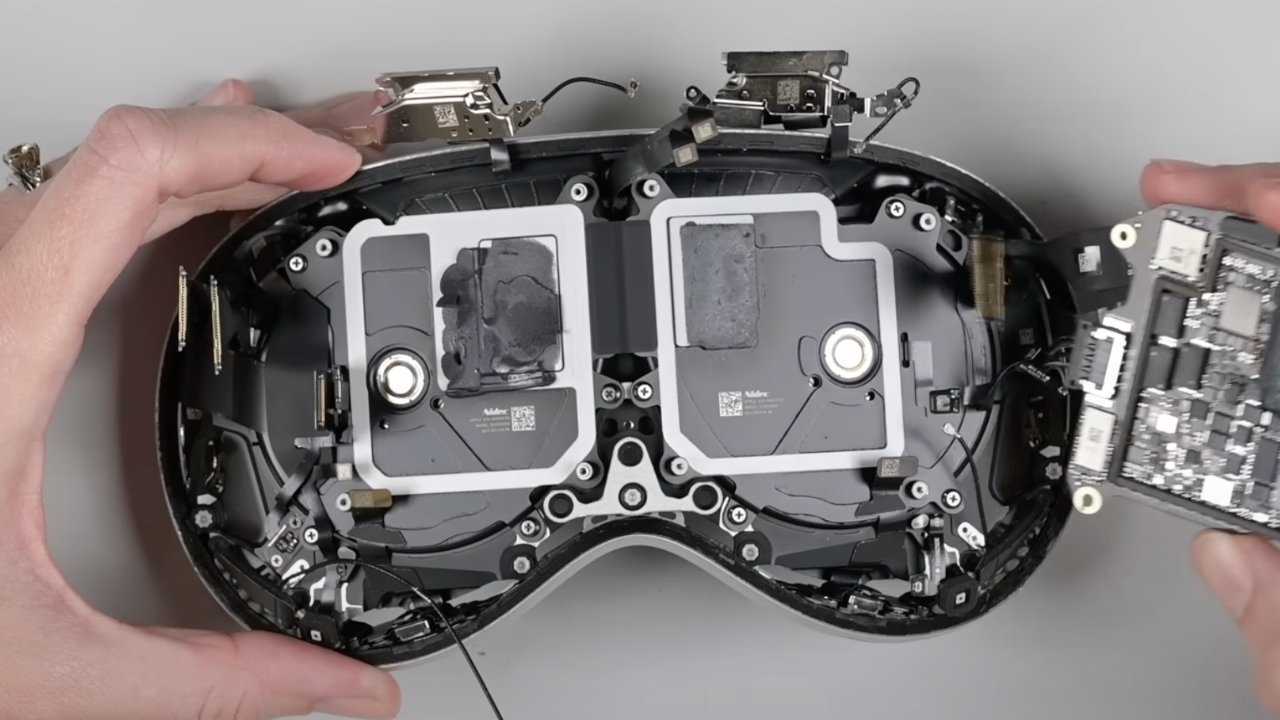While a further teardown by iFixit shows that Apple Vision Pro is not like having a 4K display in front of each eye, it’s close and the device has an extremely high pixel density.
In its first teardown of the Apple Vision Pro, iFixit showed how EyeSight used multiple displays in the front of the unit.
For a second teardown, this time sufficient to award the device 4 out of 10 for repairability, the company examined the main displays.
“The specific type of panels used here are called micro OLED panels, but they go by another name, OLED on silicon,” says iFixit. “TSMC provided the silicon substrate on which Sony grew the micro OLED structure on.”
Regarding Apple’s claim that there are 23 million pixels across the two displays in an Apple Vision Pro, iFixit says no.
“You might have heard it explained as each panel having more pixels than a 4K TV,” says the company. “That’s some clever marketing — they managed to use the words 4K without claiming that the panels can deliver 4K resolution.”
Using microscopes, iFixit determined that each pixel in the display is around 7.5 microns. The display is approximately 27.5 millimeters by 24 millimeters.”
“Divide the dimensions by [the pixel size], and we find the lit area to be about 3,660 pixels by 3,200 pixels, equating to 12.1 million lit pixels, give or take a few,” says iFixit. “These values don’t fulfill the 4K definition by commercial standards — but neither do 4K TVs.”
Televisions with 4K typically have displays that are 3840 x 2160 pixels, so the Apple Vision Pro is close in one dimension and exceeds 4K in the other.
Ultimately, the firm calculated that the Apple Vision Pro displays are about 3,380 pixels per inch.
“You can fit 50 of these pixels in a single iPhone pixel,” says the firm. “[Then] 170 of these pixels would fit in a 12.9-inch iPad Pro pixel, and 2,500 of these pixels would fit in a single 65-inch 4K TV.”
However, iFixit argues that what matters more is the number of pixels per degree (PPD), the “number of observable pixels per degree of vision.”
“We’ve calculated that the Apple Vision Pro has an average PPD of somewhere around 34 pixels, based on a field of view of 100 degrees,” says the firm, “which appears to be accurate when measured against the Quest 3 in a very rudimentary test.”
“When compared to the Quest 3, the Apple Vision Pro’s field of view is slightly narrower,” it continues, “but the image quality is markedly higher.”
For this teardown, iFixit also examined the Apple Vision Pro battery, which it describes as simple “but over-engineered.” It consists of three 15.36 watt-hours iPhone-sized batteries in a stack.
Three of those would suggest 46.08 watt-hours overall, but the battery description says 35.9 watt-hours. “At first glance, this looks like Apple’s undershooting the watt-hour rating by over 20%,” says iFixit. “There’s a chance they’re purposely undercharging the cells in this pack, the same reason they just released an 80% charge limit for the [iPhone] 15 Pro.”
“The [battery] pack is also outputting more voltage than a normal USB-C pack to keep up with the Vision Pro’s high processing demands,” continues the company, “which is why they use the bespoke big lightning cable, so you don’t accidentally plug other devices in and fry them.”
To calculate its final repairability score of 4 out of 10, iFixit notes that the battery pack can’t be opened without damage. Elements of the headset itself, though, are modular and so replaceable.
This story originally appeared on Appleinsider

